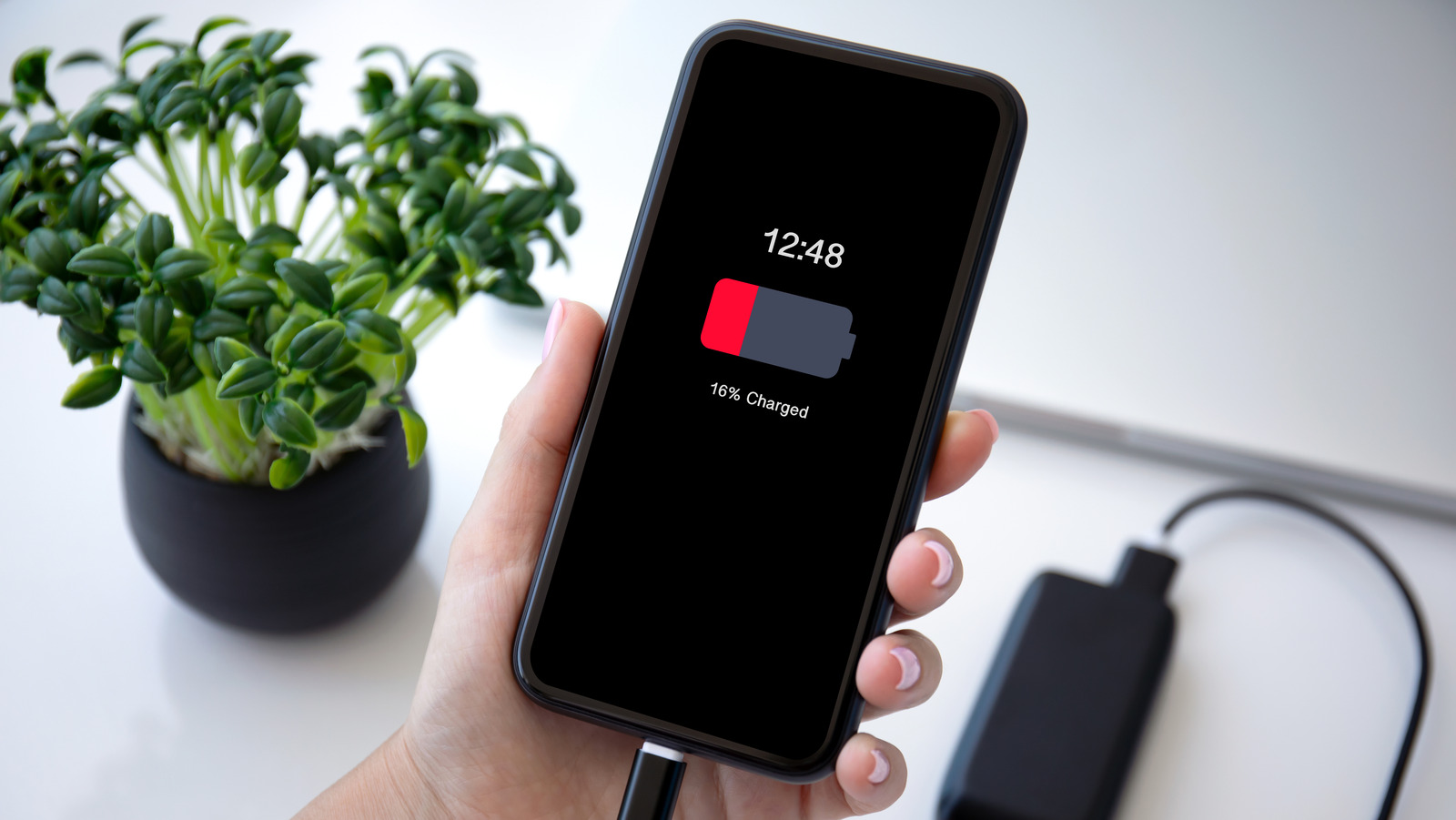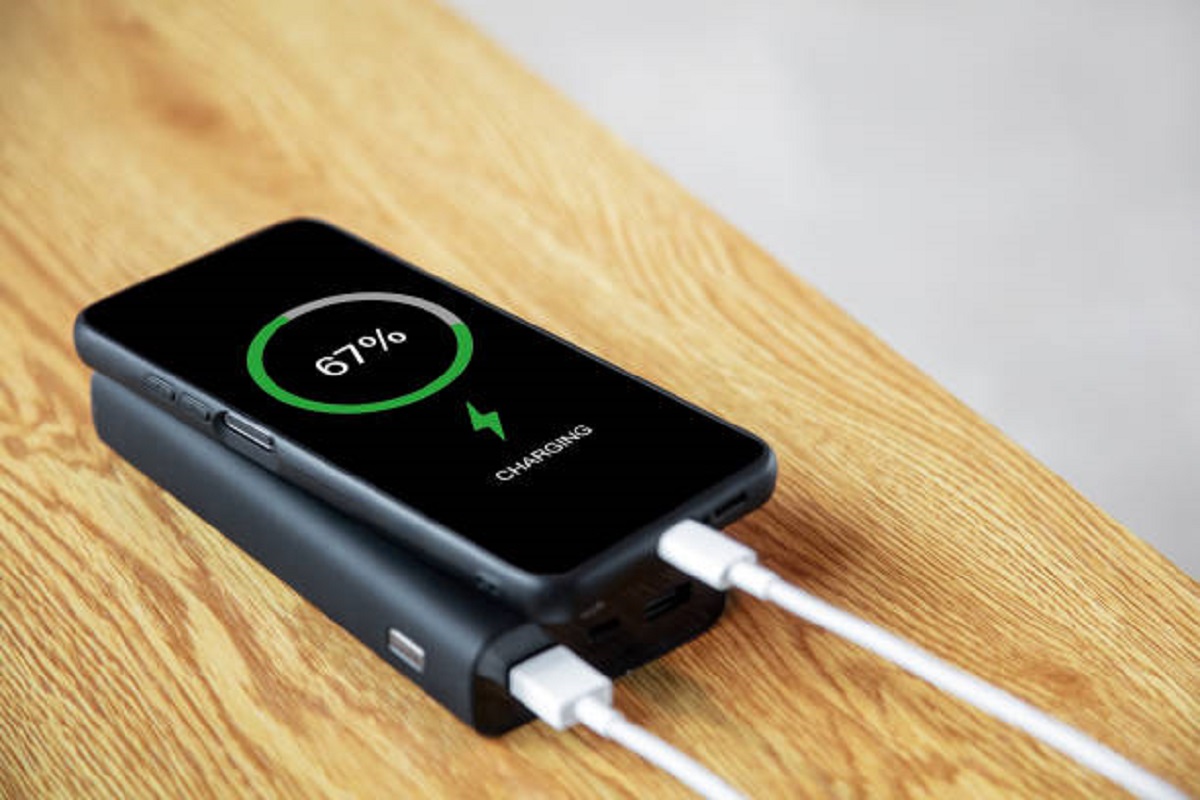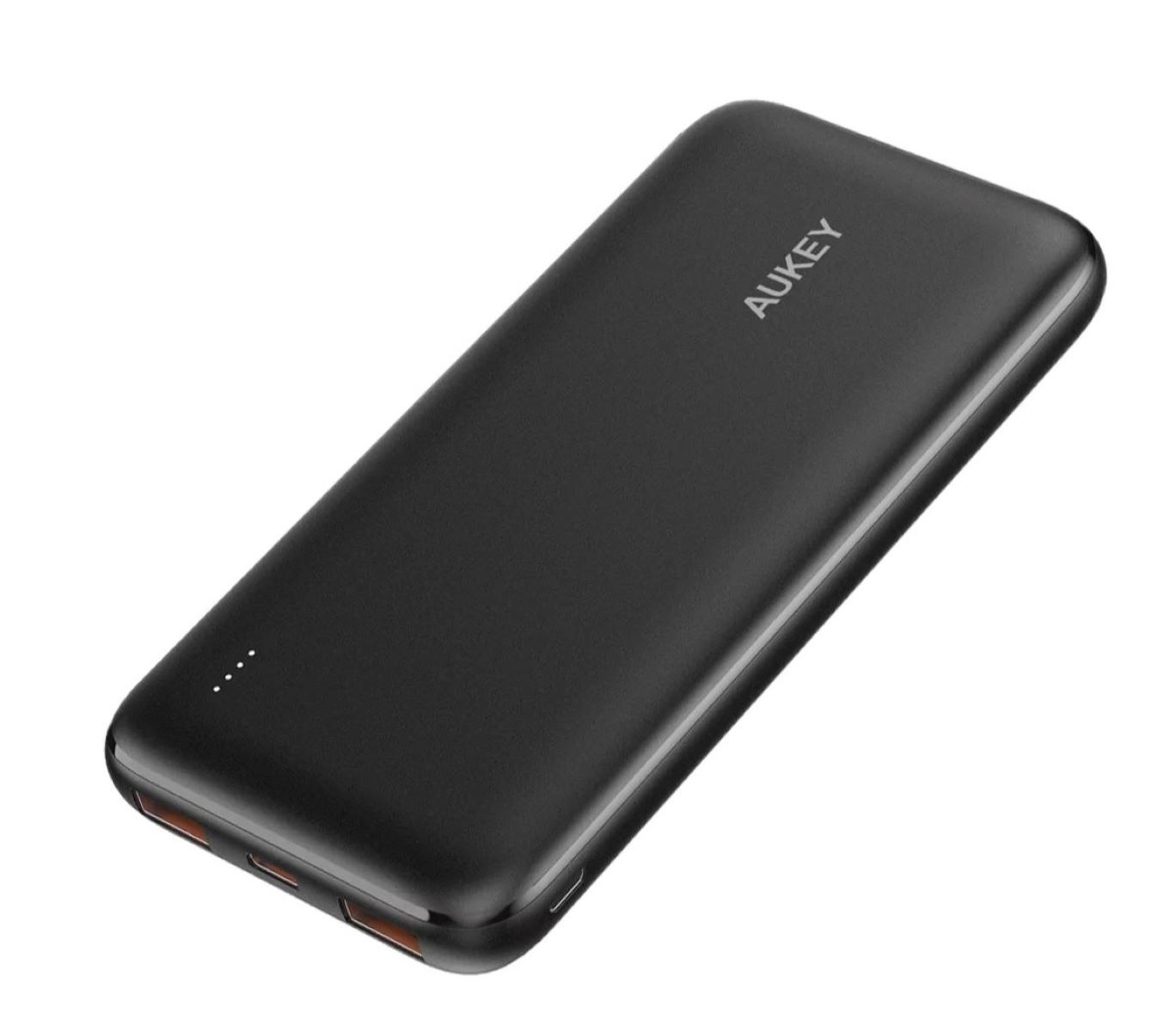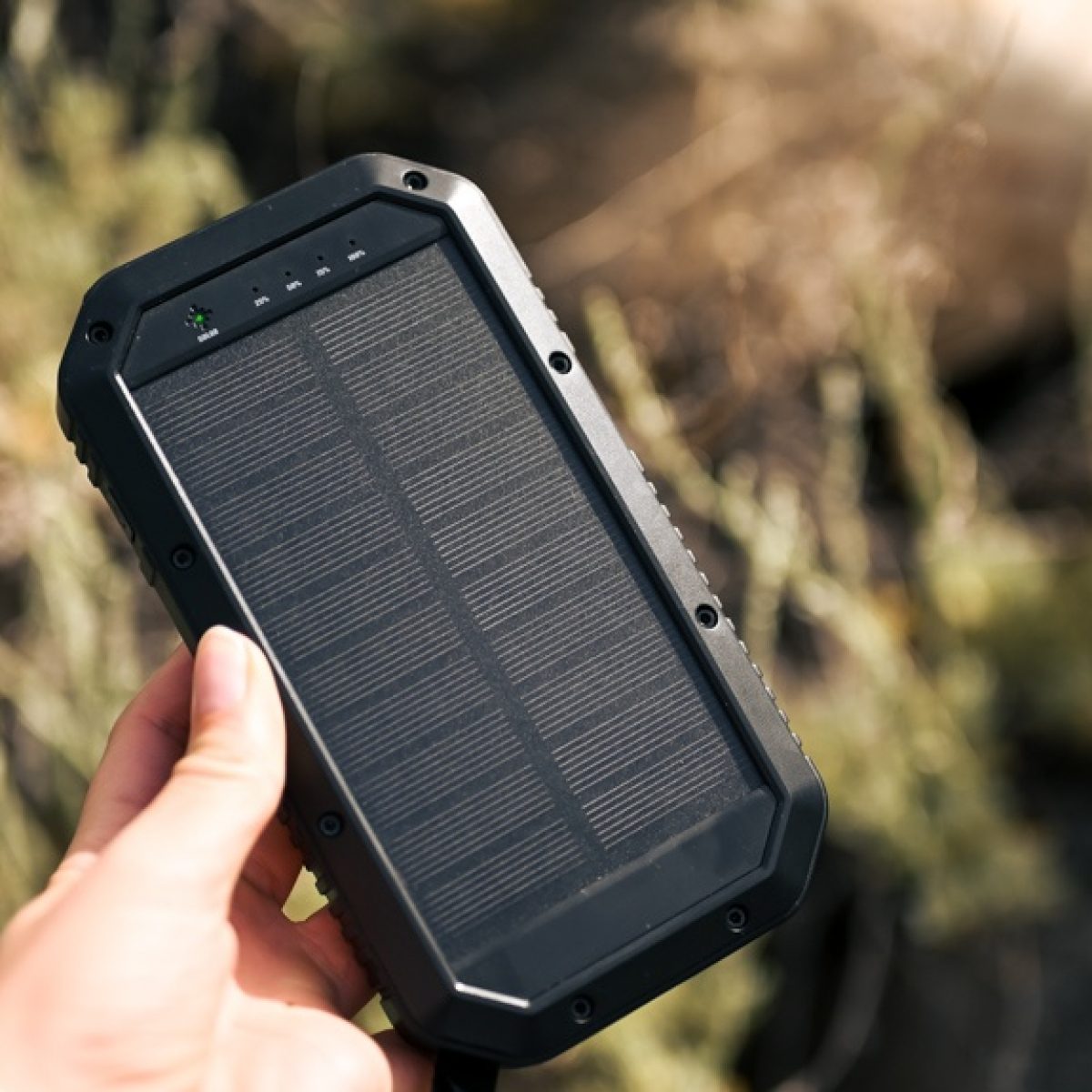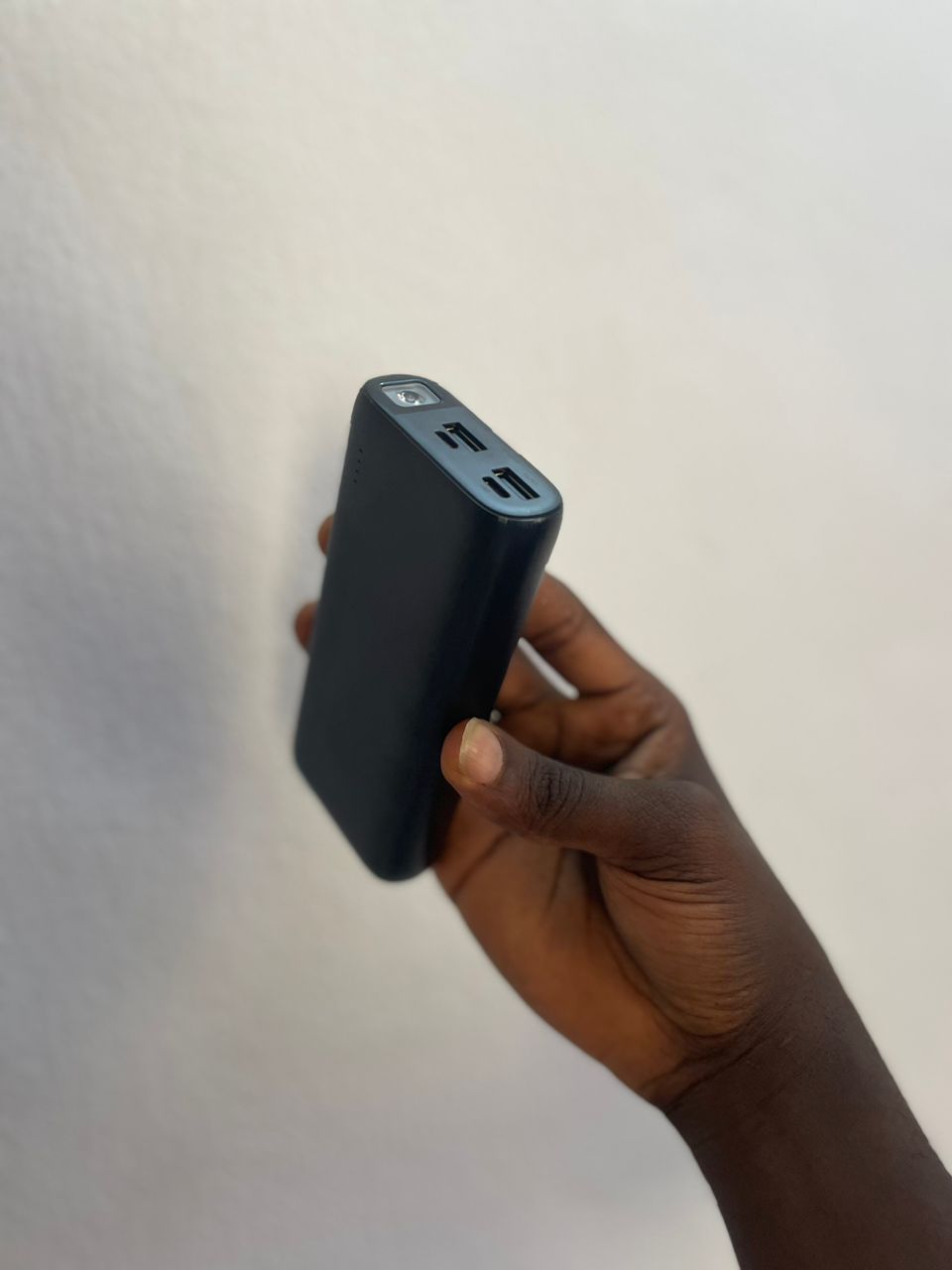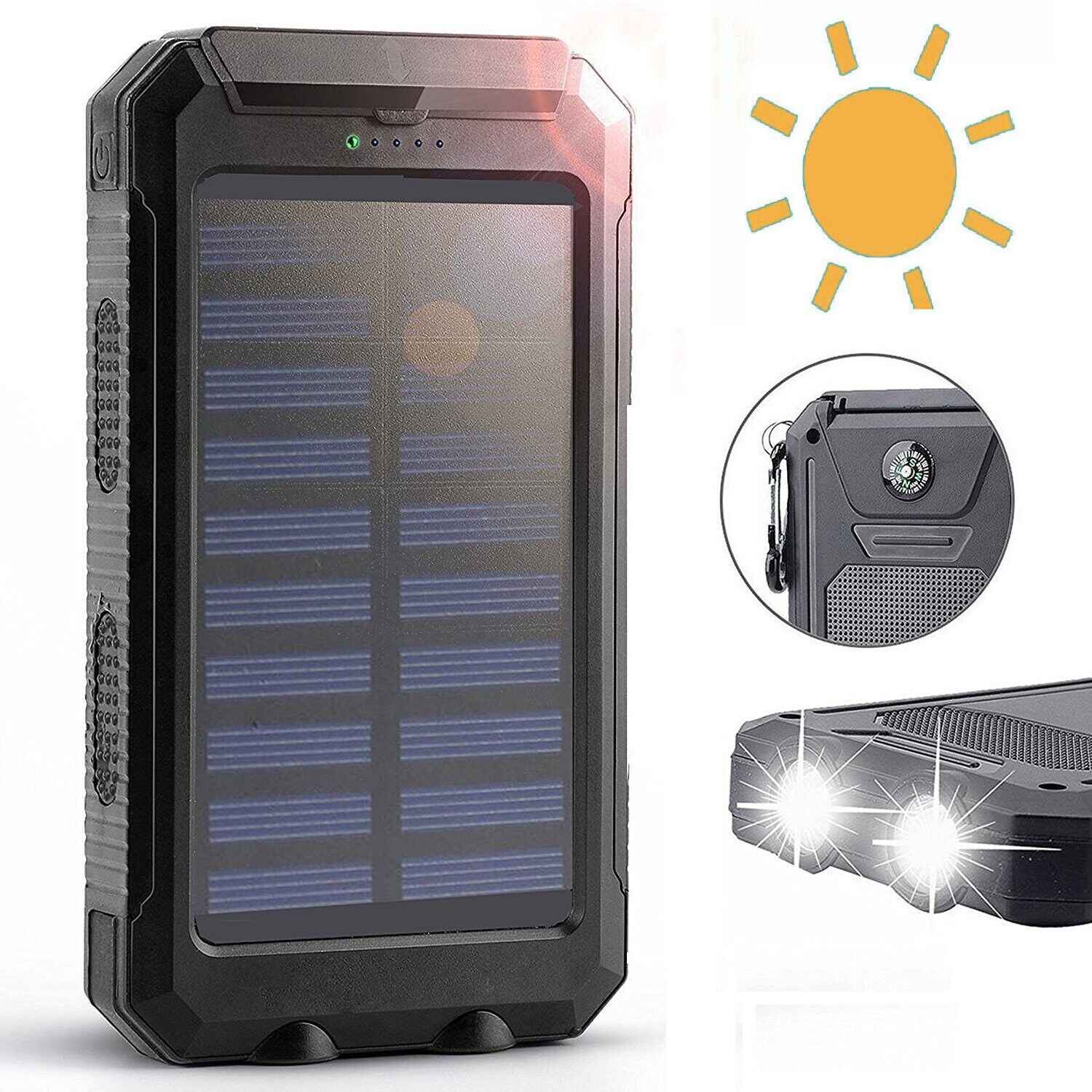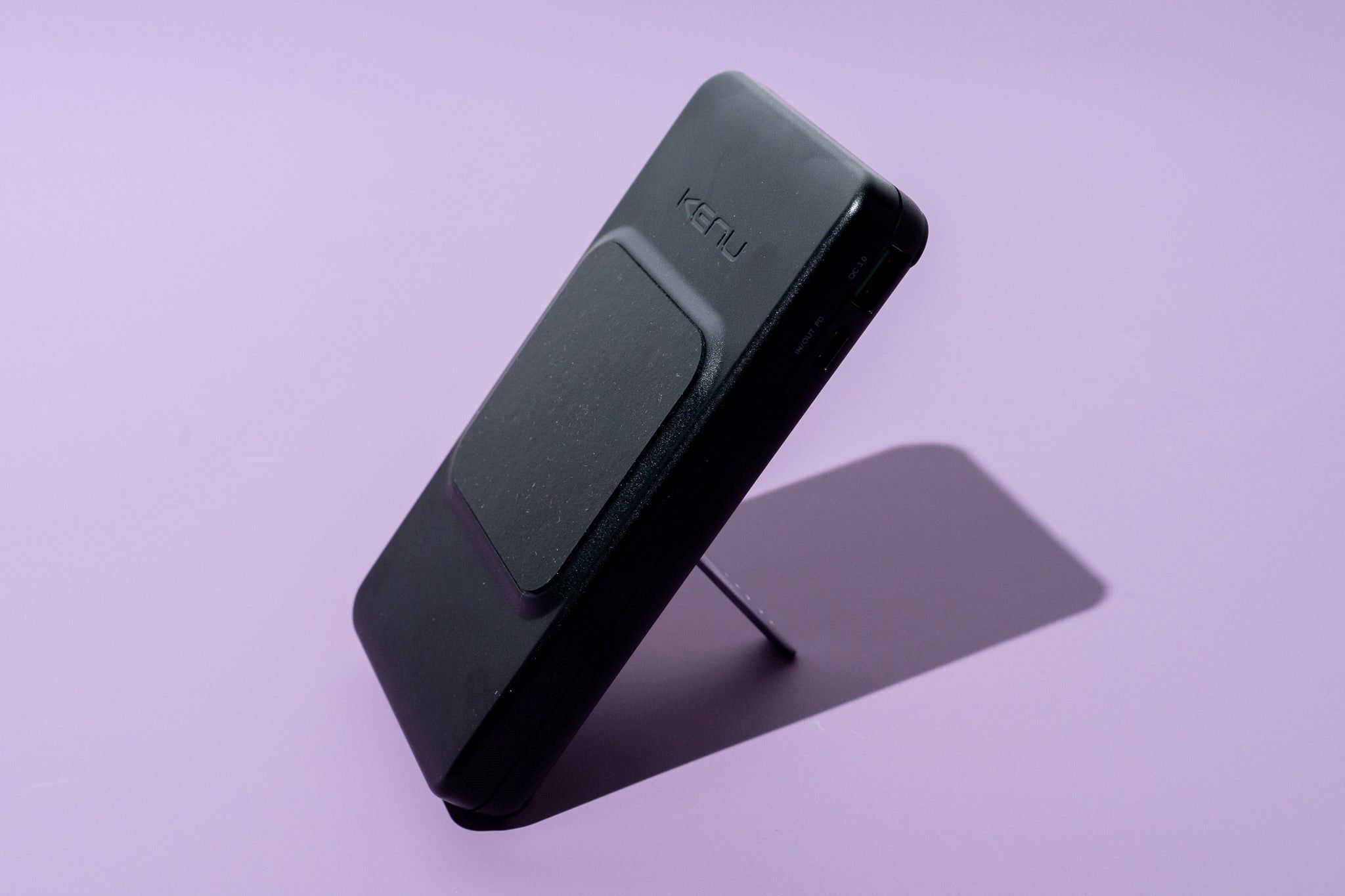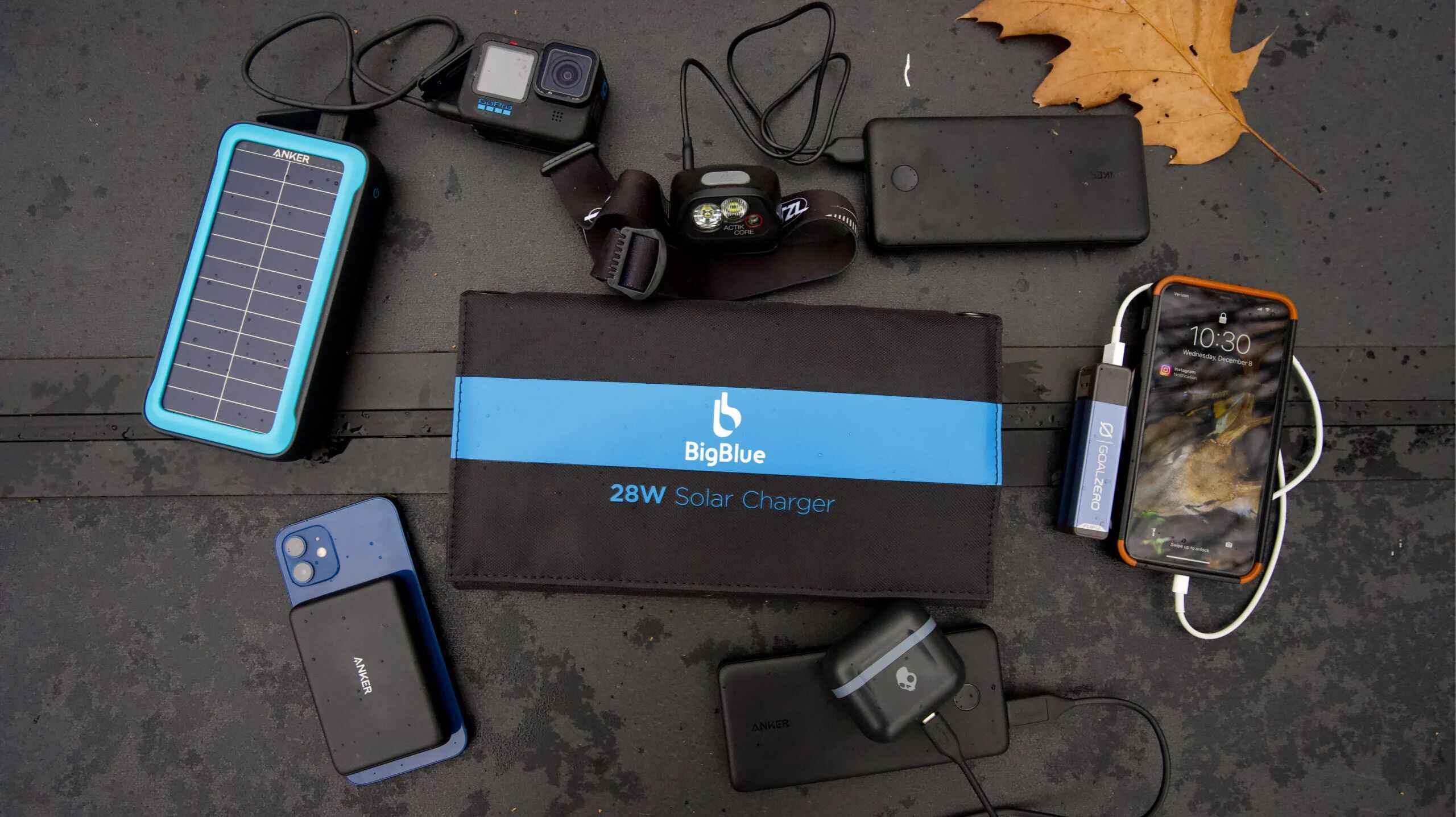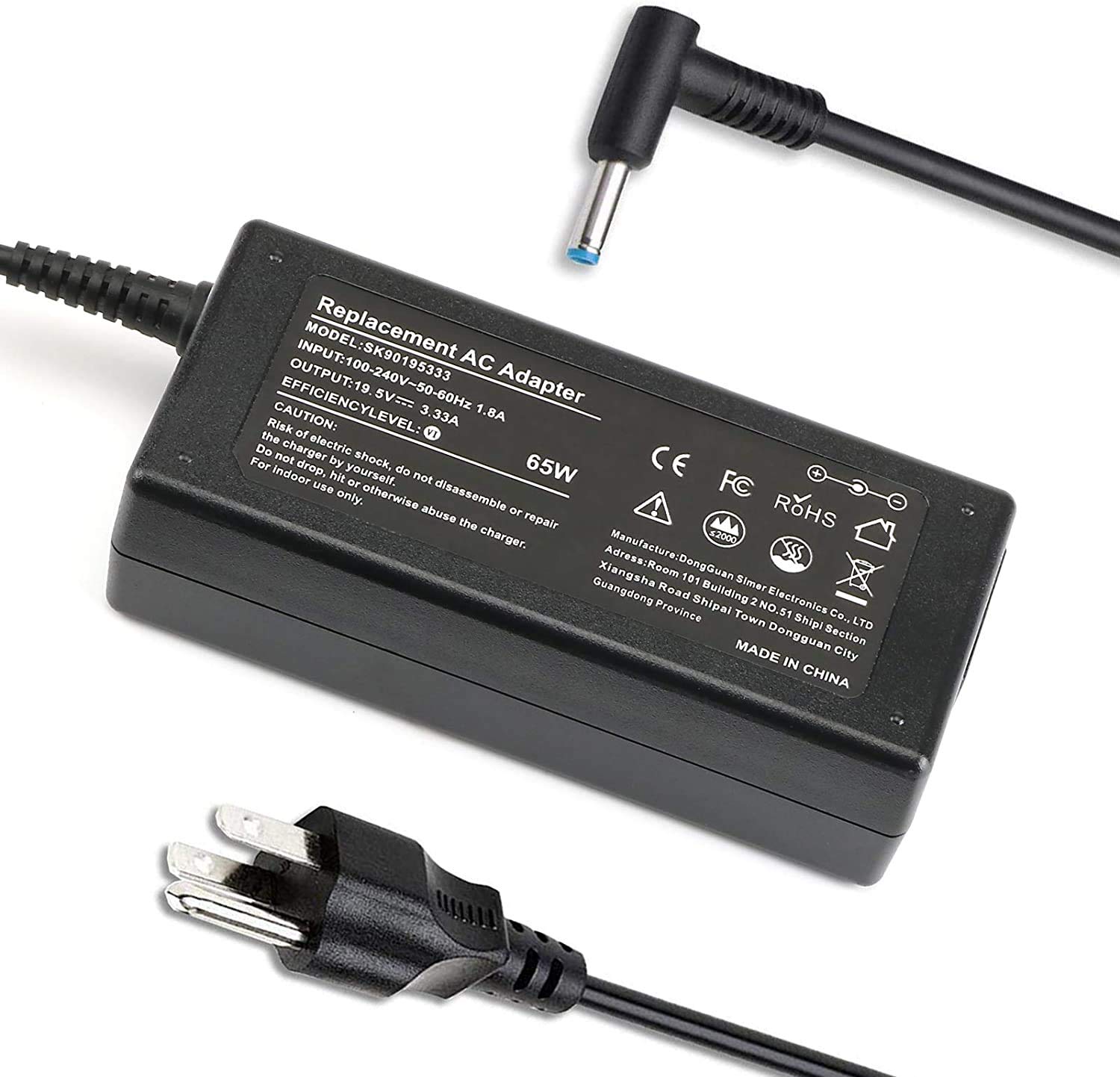Introduction
Power banks have become an essential accessory for our modern-day lives. They provide a convenient solution to keep our devices charged on the go. However, you may have experienced instances where your power bank is charging at a frustratingly slow pace, leaving you wondering why this is happening. In this article, we will explore some of the common reasons behind slow power bank charging and how to address them.
When it comes to charging speed, there are several factors that can affect the performance of a power bank. Understanding these factors can help you troubleshoot and optimize the charging process, ensuring that your power bank operates at its full potential.
Whether you are using a power bank for your smartphone, tablet, or other electronic devices, it is important to identify the underlying causes of slow charging. By doing so, you can take appropriate measures to resolve the issue and ensure that your power bank performs optimally whenever you need it.
In the following sections, we will delve into some common reasons why your power bank may be charging slowly. From issues with input current to compatibility concerns and battery degradation, we will cover a range of factors that can impact the speed of your power bank’s charging process. By understanding and addressing these factors, you can enhance the efficiency and effectiveness of your power bank to keep your devices powered up whenever and wherever you need them.
Why is my power bank charging slow?
There are several factors that can contribute to slow charging of your power bank. Understanding these factors can help you diagnose and address the issue effectively. Let’s take a closer look at some of the common reasons why your power bank may be charging at a slower rate:
- Low input current: The input current is the amount of electric current flowing into your power bank during the charging process. If the input current is low, it will result in slower charging. This can be caused by using a low-powered charging adapter or connecting the power bank to a USB port with low output.
- Incompatible charging cable: The charging cable plays a crucial role in the charging process. Using a low-quality or damaged charging cable can lead to slower charging speeds. It is important to use a cable that is compatible with your power bank and capable of delivering the required current.
- High capacity power bank: Power banks with higher capacity tend to take longer to charge compared to lower capacity ones. This is because they have more cells that need to be charged, which requires a longer charging time. If you are using a power bank with a high capacity, it is normal for it to charge more slowly.
- Using power bank while charging: Some power banks allow you to use the connected device while charging, but this can significantly slow down the charging process. When the power bank is simultaneously providing power to your device and charging itself, it divides its output between the two, resulting in slower charging.
- Charging with low-powered source: If you are charging your power bank using a low-powered source, such as a computer USB port, it may result in slower charging. USB ports on computers often have lower output current compared to dedicated wall chargers, which can prolong the charging time.
- Battery degradation: Over time, the capacity and performance of the power bank’s battery can degrade. This can lead to slower charging speeds as the battery is no longer able to hold a charge as efficiently. If you’ve been using the power bank for a long time, it may be worth considering replacing the battery.
- Inadequate power bank maintenance: Proper maintenance of your power bank can also affect its charging speed. Accumulated dirt, dust, or debris on the charging ports can hinder the flow of electricity, leading to slower charging. Regularly cleaning the charging ports can help maintain optimal charging performance.
- Faulty power bank: In some cases, the slow charging may be due to a faulty power bank. If you have tried various charging cables, adapters, and sources but the charging speed remains significantly slow, it is possible that there is an issue with the power bank itself. Consider contacting the manufacturer or seeking professional assistance to diagnose and repair the power bank.
By identifying the specific reason behind the slow charging, you can take appropriate action to resolve the issue. Whether it requires using a higher-powered charging adapter, replacing the charging cable, or seeking professional help, addressing the underlying cause will help ensure that your power bank charges at an optimal speed and keeps your devices powered up when you need them the most.
Low input current
One of the common reasons why your power bank may be charging slowly is due to low input current. The input current refers to the amount of electric current flowing into your power bank during the charging process. If the input current is low, it will result in slower charging speed.
The input current can be affected by several factors. Firstly, using a low-powered charging adapter can lead to slower charging. Make sure that you are using an adapter that is capable of delivering sufficient current to your power bank. Check the specifications and ensure that the output current of the adapter matches the requirements of your power bank.
Another factor that can contribute to low input current is connecting the power bank to a USB port with low output. USB ports on computers, for example, often have lower output current compared to dedicated wall chargers. If you are using a computer USB port to charge your power bank, it may significantly prolong the charging time.
To address the issue of low input current, try using a higher-powered charging adapter or connecting your power bank to a wall charger with higher output current. This will ensure that your power bank receives the necessary electric current to charge at a faster rate.
Furthermore, it is important to note that using charging cables with thick wires can also help maximize the input current. Thicker wires have less resistance, allowing more current to flow freely and improving the charging speed of your power bank.
Overall, if you find that your power bank is charging slowly, it is worth checking the input current. Ensure that you are using an adapter with sufficient output current and consider using a charging cable with thicker wires. By optimizing the input current, you can significantly improve the charging speed of your power bank, keeping your devices powered up efficiently.
Incompatible charging cable
Using an incompatible charging cable is another common factor that can contribute to slow charging of your power bank. The charging cable plays a crucial role in delivering the electric current from the power source to the power bank. If the cable is not compatible or does not meet the required specifications, it can result in slower charging speeds.
One of the main issues with incompatible charging cables is the quality and thickness of the wires. Low-quality or damaged cables may have thinner wires that increase the resistance and hinder the current flow. This can significantly impact the charging speed of your power bank.
When selecting a charging cable, it is important to ensure that it is compatible with your power bank and capable of delivering the required current. Look for cables that are specifically designed for fast charging or have high-quality construction. These cables often have thicker wires and better insulation to minimize resistance and optimize charging efficiency.
Additionally, some power banks may require a specific type of charging cable, such as a USB-C cable, to achieve the fastest charging speed. Make sure to check the specifications of your power bank and use the recommended cable type to ensure optimal performance.
If you suspect that the charging cable you are using is incompatible or not functioning properly, it is advisable to try a different cable. Borrow a cable from a friend or purchase a new one from a reputable manufacturer to see if it improves the charging speed of your power bank.
By using a compatible and high-quality charging cable, you can ensure efficient and speedy charging of your power bank. Paying attention to the cable’s compatibility and construction can greatly enhance your overall charging experience and keep your power bank ready for use whenever you need it.
High capacity power bank
If you own a power bank with a high capacity, you may notice that it takes longer to charge compared to power banks with lower capacities. This is because high capacity power banks have more cells that need to be charged, resulting in a longer charging time.
Power bank capacity is typically measured in milliampere-hours (mAh). The higher the capacity, the more energy the power bank can store. While having a high capacity power bank is beneficial for providing multiple charges to your devices, it does come with the tradeoff of slower charging.
When a power bank has a larger capacity, it requires a longer charging time to fill up all the cells with electricity. This means that if you have a power bank with a capacity of 20,000mAh and are charging it with a standard charging adapter, it may take several hours to fully charge.
It is important to keep in mind that the charging speed of a high capacity power bank is influenced by the amount of electric current flowing into it. Using a higher-powered charging adapter or connecting the power bank to a wall charger with higher output current can help speed up the charging process.
Furthermore, some high capacity power banks come with multiple input ports, allowing you to charge them simultaneously using multiple charging adapters or USB cables. This can help reduce the overall charging time by distributing the electric current across all the inputs.
If you own a high capacity power bank and find that the charging time is longer than expected, it is important to be patient and allow sufficient time for the power bank to charge. Additionally, make sure to use a charging adapter that provides sufficient output current to maximize the charging speed.
Overall, the tradeoff of longer charging time is a small price to pay for the convenience and multiple charging capabilities offered by high capacity power banks. By understanding the factors at play and optimizing the charging setup, you can make the most of your high capacity power bank and enjoy seamless charging for your devices.
Using power bank while charging
Using your power bank to charge your device while it is being charged itself can significantly impact the charging speed. While some power banks allow simultaneous charging and discharging, it is important to note that this can result in slower charging speeds.
When you use your power bank to charge another device while it is connected to a power source, the power bank divides its output between charging the connected device and charging itself. This means that only a portion of the power bank’s capacity is dedicated to charging itself, resulting in a slower overall charging process.
If you find that your power bank is charging slowly and you are using it to charge a device simultaneously, it is advisable to prioritize charging the power bank itself first. Disconnect any devices that are being charged and allow the power bank to charge fully before using it to charge other devices.
In some cases, you may have no choice but to use your power bank while it is being charged. In such situations, it is important to be aware that the charging speed will be slower, and you may need to extend the charging time accordingly.
It is also worth noting that using your device while it is connected to a power bank that is being charged can generate heat. This heat can impact the charging speed and even lead to inefficient charging or potential damage to the power bank and device. It is advisable to avoid using your device intensively while it is being charged.
Ultimately, to ensure optimal charging speed, it is best to allow your power bank to charge without being used to charge other devices simultaneously. By prioritizing the charging of the power bank and minimizing usage during the charging process, you can maximize the efficiency and speed of your power bank’s charging capabilities.
Charging with low-powered source
The power source you use to charge your power bank can have a significant impact on its charging speed. Charging your power bank with a low-powered source, such as a computer USB port or a low-output wall charger, can result in slower charging speeds.
USB ports on computers typically have lower output current compared to dedicated wall chargers. They are designed primarily for data transfer and may not provide sufficient power to charge your power bank at its optimal speed. If you find that your power bank is charging slowly, consider using a wall charger with a higher output current.
In addition to the output current, the quality and condition of the charging cable can also affect the charging speed. Cheap or damaged cables may have thinner wires that increase resistance and hinder the flow of electric current. Using a high-quality and compatible charging cable can help maximize the charging speed of your power bank.
It is advisable to check the specifications of your power bank and use a charger that matches the recommended output current. Higher-output wall chargers can provide a more powerful and efficient charging current, allowing your power bank to charge at a faster rate.
Furthermore, using a charging cable with thicker wires can help minimize resistance and improve the charging speed, especially when paired with a high-powered charging adapter. Thicker wires have lower electrical resistance, allowing more current to flow smoothly into your power bank.
Overall, charging your power bank with a low-powered source can lead to slower charging speeds. Make sure to use a wall charger with sufficient output current and a compatible and high-quality charging cable to maximize the charging speed of your power bank. By providing the power bank with the necessary current and minimizing resistance, you can ensure that it charges efficiently and gets ready to power your devices.
Battery degradation
Over time, the battery of your power bank can experience degradation, leading to slower charging speeds. Battery degradation is a natural process that occurs as the battery undergoes numerous charge cycles.
As the battery degrades, its capacity to hold a charge diminishes. This means that even if you fully charge your power bank, it may not provide the same amount of power as it did when it was new. Consequently, the charging speed may be slower as the battery’s overall efficiency decreases.
Several factors contribute to battery degradation, including the number of charge cycles, exposure to extreme temperatures, and usage patterns. Power banks that are subject to frequent charging and discharging cycles are more likely to experience faster battery degradation.
While you cannot completely prevent battery degradation, there are steps you can take to minimize its impact. For instance, avoid exposing your power bank to extreme temperatures, both high and low, as extreme temperatures can accelerate battery degradation. Additionally, try not to excessively discharge your power bank before recharging it, as frequent deep discharges can wear out the battery faster.
If you have been using your power bank for an extended period and notice that the charging speed has significantly decreased, it may be an indication of battery degradation. In such cases, it might be worth considering replacing the battery, especially if the power bank’s capacity no longer meets your charging needs.
To ensure the longevity of your power bank’s battery, store it in a cool and dry place when not in use. Additionally, avoid overcharging your power bank or leaving it connected to a power source for prolonged periods. Overcharging can contribute to battery degradation over time.
While battery degradation is an inevitable part of any rechargeable battery’s life cycle, taking proper care of your power bank and being mindful of charging practices can help slow down the degradation process. By extending the lifespan of your power bank’s battery, you can continue to enjoy optimal charging speeds for a longer period.
Inadequate power bank maintenance
Inadequate maintenance of your power bank can also contribute to slow charging speeds. Over time, dirt, dust, and debris can accumulate on the charging ports and interfere with the flow of electricity, resulting in slower charging.
To ensure optimal charging performance, it is important to regularly clean the charging ports of your power bank. You can use a soft cloth or a gentle brush to remove any dirt or debris that may have accumulated. Be sure to avoid using sharp objects or excessive force that could cause damage to the charging ports.
In addition to cleaning the charging ports, it is important to keep your power bank in a clean and protected environment. Avoid exposing it to excessive moisture, extreme temperatures, or harsh conditions, as these factors can affect the overall performance and lifespan of the power bank.
Proper storage is also essential for maintaining the efficiency of your power bank. When not in use, store the power bank in a cool and dry place, away from direct sunlight and other heat sources. This helps to prevent unnecessary heat buildup, which can impact the battery and charging speed.
It is worth noting that some power banks come with built-in mechanisms to prevent overcharging and ensure safe and efficient charging. These mechanisms may include features like auto-shutoff or output power regulation. Familiarize yourself with the specific maintenance recommendations provided by the manufacturer to optimize the performance and durability of your power bank.
Regular maintenance and care of your power bank will not only improve its charging speed but also extend its overall lifespan. By keeping the charging ports clean, protecting the power bank from extreme conditions, and following the manufacturer’s guidelines, you can ensure that your power bank continues to charge efficiently and reliably.
Faulty power bank
If you have tried various charging cables, adapters, and power sources, but your power bank continues to charge slowly, it is possible that there is a fault with the power bank itself. A faulty power bank can cause difficulties in achieving optimal charging speed.
There are several potential issues that can lead to a power bank being faulty. For example, there may be a problem with the internal circuitry or the charging circuit within the power bank. It is also possible that the battery itself has degraded or malfunctioned, resulting in slower charging performance.
In some cases, a power bank may appear to charge normally but discharge more quickly than expected or provide a lower output current. These signs can also indicate a fault within the power bank.
If you suspect that your power bank is faulty, you can try a few troubleshooting steps. First, ensure that the charging ports and connectors are clean and free from any debris. Sometimes, a poor connection can result in slow charging speeds.
If cleaning the charging ports does not improve the charging speed, you can attempt to reset the power bank. This can be done by disconnecting the power bank from any power source and pressing the reset button if one is available. Consult the user manual or contact the manufacturer for information on how to reset your specific power bank model.
If these troubleshooting steps do not resolve the issue, it may be necessary to contact the manufacturer or seek professional assistance for repair or replacement. Depending on the warranty and the age of the power bank, it may be covered for repair or replacement.
It is essential to remember that attempting to repair a power bank yourself can be dangerous and may void the warranty. It is always advisable to consult the manufacturer or a professional technician for assistance with a faulty power bank.
If you determine that your power bank is indeed faulty and beyond repair, it is time to consider purchasing a new one. When choosing a new power bank, consider the specifications, reviews, and reliability of the brand to ensure that you are getting a high-quality and reliable product.
In summary, a faulty power bank can be a potential reason why your power bank is charging slowly. If you have exhausted all other troubleshooting options, it may be necessary to contact the manufacturer or seek professional assistance for repair or replacement. Prioritize your safety and consult the appropriate channels to address any issues with your power bank.
Conclusion
Slow charging of a power bank can be frustrating, but understanding the reasons behind it can help you address the issue effectively. From low input current and incompatible charging cables to high-capacity power banks and using the power bank while charging, there are several factors that can contribute to slow charging speeds. Additionally, charging with a low-powered source, battery degradation, inadequate power bank maintenance, and faulty power banks can also impact the charging speed.
To optimize the charging speed of your power bank, it is important to use a charging adapter with sufficient output current and a compatible charging cable. Consider the capacity of your power bank and be patient with high-capacity models that naturally take longer to charge. Avoid using the power bank while it is being charged and ensure that you are using a high-powered source to charge it. Proper maintenance, such as keeping the charging ports clean and protecting the power bank from extreme conditions, can also help improve charging speed and overall performance.
If you have tried various troubleshooting steps and your power bank continues to charge slowly, it may indicate a faulty power bank. In such cases, it is essential to contact the manufacturer or seek professional assistance for repair or replacement, depending on the warranty and age of the device.
By taking the necessary steps to address the specific reasons for slow charging, you can ensure that your power bank operates at its optimal speed, providing you with a reliable and efficient source of portable power for your devices.







